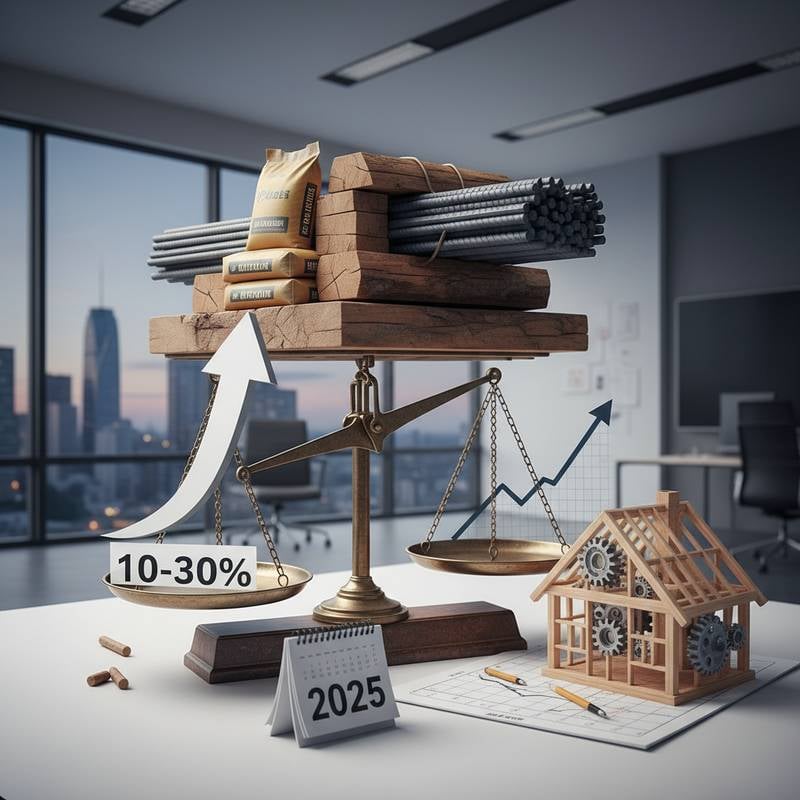Cross-Laminated Timber Versus Steel Frame: Cost Analysis for 2025
When planning a construction project for 2025, choosing between cross-laminated timber (CLT) and steel framing is a pivotal decision that impacts budget, timeline, and sustainability. Both materials bring distinct strengths to the table, with CLT often proving more affordable for low to mid-rise buildings, while steel shines in taller, intricate designs. Costs typically span from $150 to $400 per square foot, influenced by design complexity, labor rates, and geographic location. This guide breaks down the critical factors to help you make an informed choice with professional precision.
Key Considerations Before Breaking Ground
Before committing to either CLT or steel, several foundational aspects demand attention to ensure compliance and safety. Local building codes often impose specific height restrictions or fire safety standards, particularly for CLT, which may require additional treatments or design adjustments. Both systems necessitate structural permits and engineering oversight, so consulting with licensed professionals is not optional but mandatory. Homeowners can participate in reviewing proposals and understanding cost drivers, yet all structural work must be executed by qualified contractors using commercial-grade equipment.
Detailed Cost Breakdown
Material Expenses
For CLT, panel costs generally fall between $6 and $14 per square foot, depending on thickness, wood grade, and supplier proximity. Transportation can inflate expenses due to the bulk and weight of prefabricated panels. Steel framing, on the other hand, ranges from $8 to $20 per square foot, with fluctuations tied to global steel market trends. Additional costs for fireproofing and protective coatings often increase the overall material budget for steel. When evaluating bids, request a clear separation of material, labor, and finishing expenses to identify potential savings.
Labor Investment
Labor dynamics differ significantly between these systems. CLT installation benefits from prefabrication, allowing crews to assemble panels quickly with cranes, often reducing on-site time. However, specialized training is still required for precise alignment and sealing. Steel framing demands skilled ironworkers for welding and bolting, typically at higher hourly rates, due to the technical expertise and heavy machinery involved. Do not assume faster installation equates to lower costs; always scrutinize labor estimates per square foot for accuracy.
Construction Timeline
Speed is a critical factor in managing project budgets. CLT's prefabricated nature can shave weeks off a build, minimizing financing costs and weather-related delays by enabling rapid enclosure. Steel erection is comparably swift, yet subsequent tasks like fireproofing and decking can extend the timeline. Request a detailed schedule from your contractor, highlighting the framing completion date, to anticipate how speed impacts overall expenses.
Sustainability and Long-Term Value
Environmental impact and operational costs are increasingly central to material selection. CLT, sourced from renewable timber, actively stores carbon and, when paired with effective insulation, can lower heating and cooling expenses. Some projects may even qualify for green building incentives. Steel, while recyclable and durable, requires significant energy to produce and conducts heat readily, potentially raising utility bills unless mitigated by robust insulation. If sustainability is a priority, ask for a lifecycle cost analysis to weigh long-term benefits against initial outlays.
Post-Construction Responsibilities
Managing waste and ensuring quality during and after construction are vital steps. CLT offcuts can often be recycled into other wood products or disposed of as standard wood waste. Steel scraps hold resale value and are typically handled by contractors for recycling. Clarify disposal responsibilities in your contract to avoid unexpected costs. For quality assurance, monitor CLT for moisture damage by ensuring panels remain sealed, and inspect steel for corrosion, confirming fireproofing remains intact. Request formal inspection reports at key project milestones to document compliance and condition.
Maintenance and Durability
Both materials demand ongoing care to maximize lifespan. CLT requires vigilant protection against water exposure, with regular checks for leaks and sealant integrity to prevent deterioration. Steel structures need monitoring for rust, especially in humid or coastal areas, and protective coatings may require periodic reapplication. Plan for structural inspections every five years to catch issues early and maintain safety standards for either system.
Professional Involvement: When and Why
Structural design and installation are not areas for amateur involvement. A licensed engineer must oversee all plans and modifications, with design fees typically accounting for 5 to 15 percent of total project costs. Framing installation labor often ranges from $25 to $75 per square foot, varying by region and project scope. When selecting contractors, verify their licensing, insurance coverage, and direct experience with CLT or steel systems. Request references from similar projects to confirm their capability to deliver on time and within budget.
Frequently Asked Questions
- Is CLT more cost-effective than steel? For low to mid-rise structures, CLT often presents lower material costs, while steel may be more economical for high-rise or complex builds.
- Which material allows for quicker construction? CLT panels generally install faster due to prefabrication, though steel erection is efficient; total time depends on additional finishing requirements.
- Are permits required for these materials? Yes, both CLT and steel construction necessitate structural permits and thorough inspections.
- Which option offers better sustainability? CLT provides environmental benefits through carbon storage and renewable sourcing, while steel is recyclable but energy-intensive to manufacture.
- What is the expected lifespan of these systems? With proper maintenance, both can endure for decades; CLT needs moisture protection, and steel requires rust prevention.
- Can homeowners handle installation themselves? No, both systems require professional expertise, heavy equipment, and engineering supervision.
Final Thoughts
Selecting between cross-laminated timber and steel framing for a 2025 construction project involves balancing immediate costs with long-term value. By understanding material expenses, labor demands, construction speed, and sustainability impacts, you can align your choice with project goals. Always engage licensed professionals to ensure safety and compliance, and use this detailed comparison to guide discussions with contractors for optimal outcomes.









